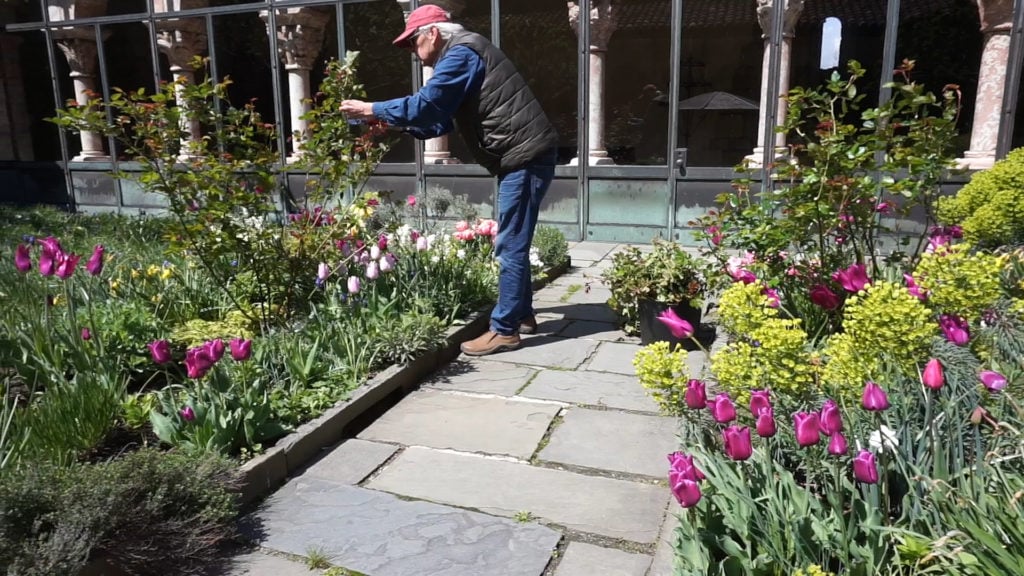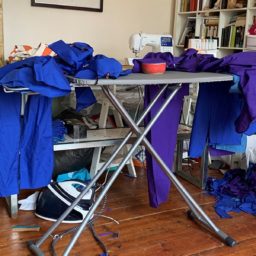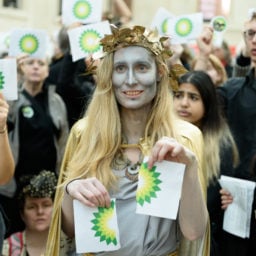It’s been roughly two months since museums across the US, both big and small, were forced to shutter abruptly. Most of them had to do so with only a few days notice, meaning there was little time to formulate long-term plans—and no expectation that the shutdown would stretch this long.
Since then, museums have had to adapt, figuring out how to care for their collections and grounds amid indefinite closures, all while keeping staffs safe.
We spoke to employees working on site at museums across the country to get a sense of how they’re doing their work. Here’s what they told us.
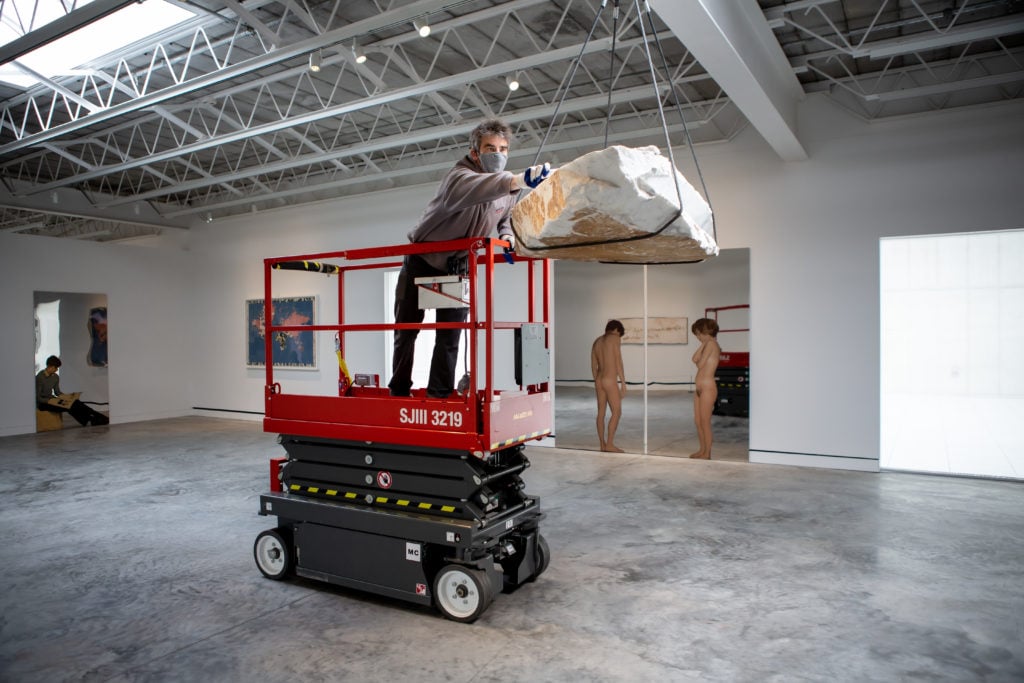
Thomas Huber, head preparator and facilities Manager at Magazzino Italian Art. Photo by Leslie Kenney, LK Photography, courtesy Magazzino Italian Art, Cold Spring, New York.
The Art
A normal day for Thomas Huber, the head preparator and facilities manager at the Magazzino Italian Art in Cold Spring, New York, begins with prepping artworks: setting out the flags that make up Giulio Paolini’s II cielo e ditorni (1988) in the museum’s garden, and checking on the refrigeration system that sustains Pier Paolo’s ice sculpture, Senza titolo (Omaggio a Fontana) (1989).
But these are not normal days, and Huber is now spending his extra time on other tasks. “I decided to take advantage of this relative downtime to reorganize our storage and preparatory facilities,” he says. “For the past couple of weeks, it has been pretty much full time.”
The routine at the country’s biggest institution, New York’s Metropolitan Museum of Art, is more complex. Carolyn Riccardelli, an objects conservator at the museum, is one of four people newly tasked with leading efforts to monitor the Met’s vast holdings. And while the museum has plans for how to deal with natural disasters and other direct physical threats to the collection, it had to quickly draw up new protocols for how to handle a long-term closure.
“You’re not going to just walk away from your collection for an unknown period of time,” Riccardelli told Artnet News. “There are things you have to check on.”
Thirty museums staffers, representing all 17 curatorial departments and the museum’s separate conservation departments, now make biweekly visits to the museum in groups of three, accompanied by Riccardelli or one of her colleagues.
Wearing masks and keeping their distance, the staffers—selected in large part because of their ability to travel to the museum without taking public transportation—begin by patrolling special exhibitions and checking on loan objects.
“It’s about sharing responsibility and keeping an eye on things,” she says.
The staffers then check on the galleries and storage facilities for their own departments, monitoring for leaks, pests, and changes in temperature and humidity levels. The koi pond in the museum’s Astor Court also needs attention.
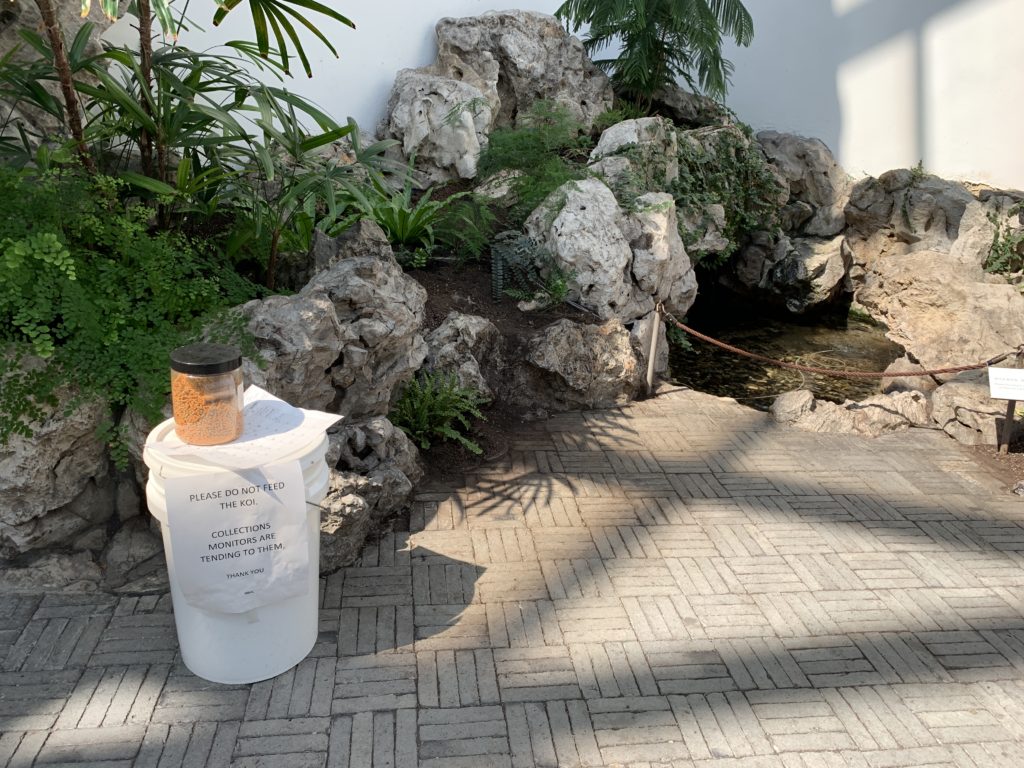
Fish food in the Astor Court koi pond at New York’s Metropolitan Museum of Art. Photo by Carolyn Riccardelli.
“There’s a whole water pump system behind the scenes that I’ve been introduced to,” Riccardelli says. “You have to go in a secret door and climb up a complicated cat walk. I’ve been at the museum more than 18 years, and I’m still discovering places that I had no idea existed.”
There are other tasks as well. “On a weekly basis, we’re warming up our X-ray machine,” Riccardelli says. “It’s like an old car—it needs to run from time to time to keep it in working condition.”
To limit unnecessary light exposure that can damage works of art, the lights in the museum have been turned off, so the emergency team has to use flashlights, and is equipped with radios for communication.
“It’s a strange experience, but we’re kind of used to it by now,” Riccardelli says.
For solace, she’s turned to Anthony van Dyke’s Saint Rosalie Interceding for the Plague-stricken of Palermo, which the museum purchased in 1871. The picture was painted in veneration of the saint said to have put an end to a deadly epidemic.
“Even though I’m not religious, I’ve been stopping and looking at her,” she says. “She’s the one who delivered Palermo from the plague. It’s the perfect painting to look at right now.”

Brian Houck, head of grounds and gardens at the Getty Center. Photo by Christopher Sprinkle, courtesy of the Getty Museum.
The Grounds
Uptown at the Met Cloisters, managing horticulturist Marc Montefusco is now attempting to do the work of three full-time staff, plus four dedicated volunteers. And he’s learning as he goes along: his first day on the job was March 2, just ten days before the museum closed indefinitely.
“I felt as a newcomer, it was the least I could I do,” Montefusco says of volunteering to work during the lockdown. “This is probably the busiest time of year for a garden. If we didn’t continue working, when it came time to reopen, the tasks would be overwhelming, and our visitors might be disappointed.”
But no matter what he accomplishes now, the public will still miss some of the work his colleagues have already done, including the flowers that have sprouted from 30,000 bulbs planted last fall.
“They did a wonderful job designing and implementing this gorgeous display, and no one gets to see it,” Montefusco laments.
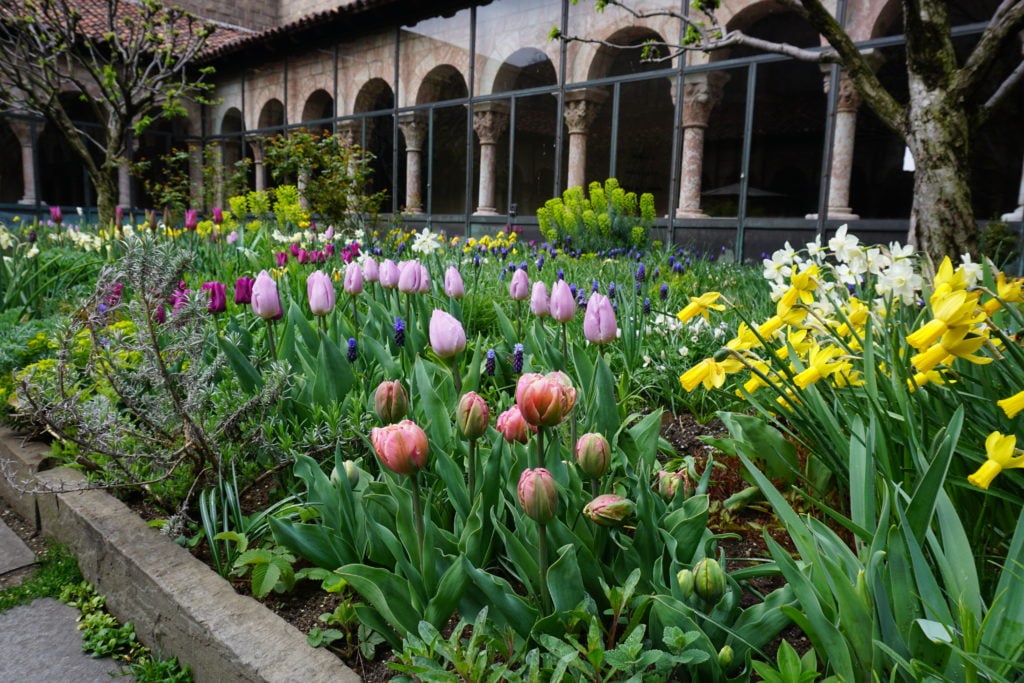
The Met Cloisters during the closure. Photo courtesy of Marc Montefusco.
The Getty Museum in Los Angeles, meanwhile, has a 50-person grounds crew that has the run of the place, even as they wear face masks and gloves and keep six feet apart from one another.
“The biggest thing is making sure our workers are safe,” says Brian Houck, the manager of the grounds and gardens. “But nature doesn’t stop.”
In recent days, the staff has gotten a head start on its annual fire-management work, which involves surveying 7,000 acres of land to trim grass and clear brush to prevent the spread of California’s devastating fires.
His team also protects the museum’s outdoor sculpture collection, and makes sure the grounds continue to meet strict landscape standards. “The grounds are the backdrop to the architecture. Taken together, that’s the Getty’s image—our brand,” Houck says. “A silver lining is that we have the space to ourselves to take in that overall aesthetic.”
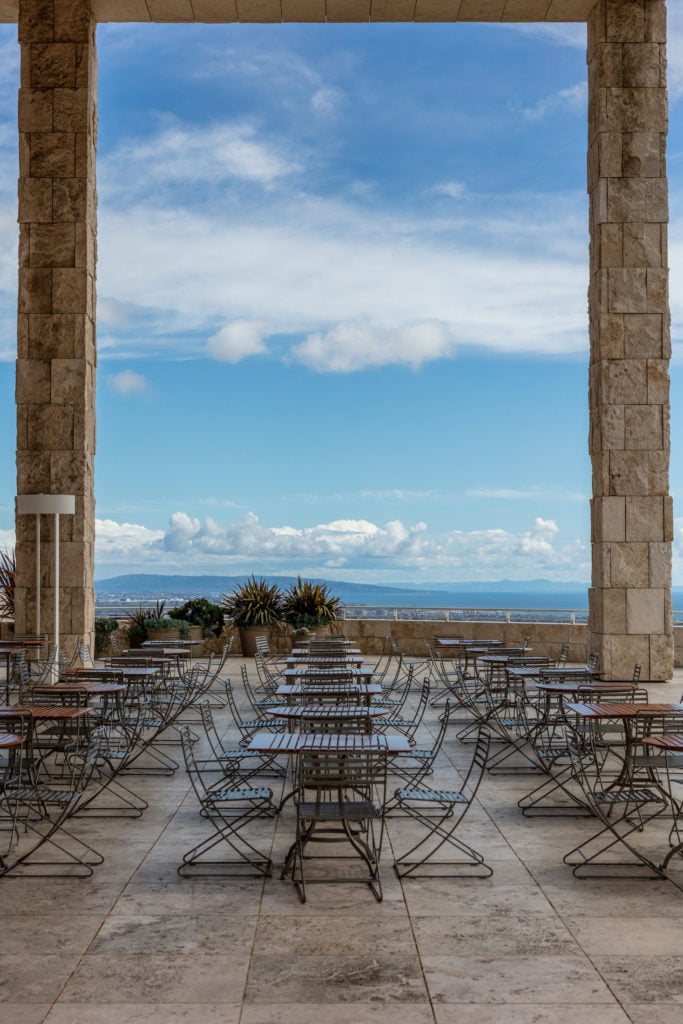
The Getty Center devoid of guests. Photo by Christopher Sprinkle, courtesy of the Getty Museum.
But the indefinite closure of the museum also meant cancelling plantings for the annual dahlia show—which Houck admits was a difficult decision to take.
“Gardeners do a lot of work to get things ready for people to see and enjoy,” he says. “We look for the smiles on people’s faces. That was a little heartbreaking.”
But there are happier moments too. At Magazzino, Huber, the preparator, tries to check on the museum’s Sardinian donkeys once a day, even though their usual caretakers are still on the job.
“Our shuttle driver, Jay Nicholas, who is also an accomplished musician, has visited a couple of times and played guitar for the donkeys,” Huber says.
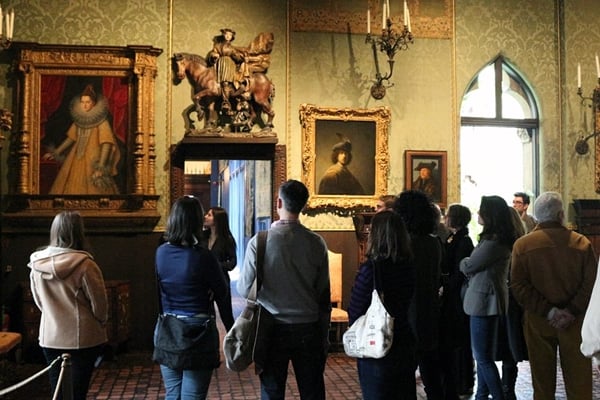
Visitors at the Isabella Stewart Gardner Museum in Boston. Photo: Isabella Stewart Gardner Museum.
The Security
Before Diane Wright, the interim director of curatorial affairs at the Toledo Museum of Art, can even enter the museum, she has to have her temperature taken. There is hand sanitizer at every door, making her hyperaware of just how many surfaces she touches on a daily basis.
“The only people who are there every single day on their regular schedule are security guards,” she says.
The situation is not dissimilar at the Isabella Stewart Gardner Museum: if non-security staff want to enter, “it has to be coordinated in advance and they are under escort,” says Anthony Amore, the museum’s director of security. “We’re on lockdown.”
The normal configuration of security posts throughout the Gardner allows for natural social distancing, and masks are available. In some ways, Amore’s job is easier now.
“There are a lot of security technologies and practices that are impractical when we’re open,” he says. “Our role has changed from watching people interact with our art, to watching our grounds and perimeter and making sure we’re secure.”
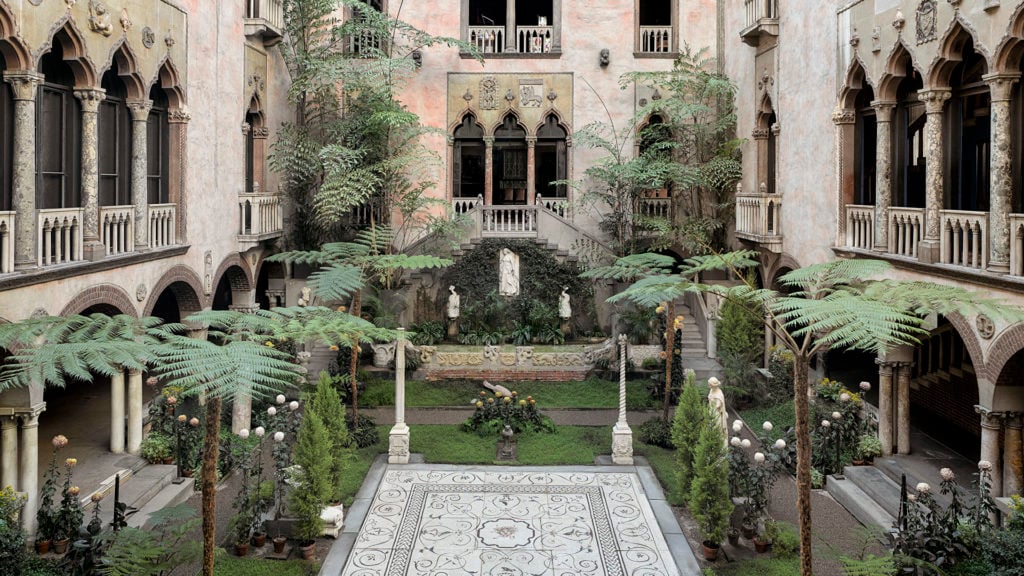
The courtyard at the Isabella Stewart Gardner Museum, Boston. Photo by Sean Dungan, courtesy of the Isabella Stewart Gardner Museum, Boston.
And although a couple of institutions have been robbed during lockdown, Amore sees no cause for concern.
“Security never sleeps. We’re holding down the fort at the Gardner,” Amore says. “I’m very confident about the security measures we’ve put into place. Right now, museums are more secure than when we’re open—a great many art thefts happen in the middle of the day.”
But nothing can fully replace a bustling museum full of eager art lovers.
“When I do my walkthroughs of the building, I swear to you the paintings look different without people there enjoying them,” Amore says. “There’s a loneliness to the artworks—they seem a little less vibrant.”
Which is a point Wright agrees on as well.
“There’s something about people walking through the hallways that brings wonderful life to the building,” she says. “We’re really eager to be able to have people come back.”
